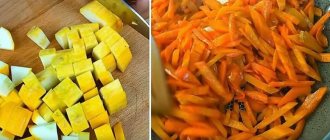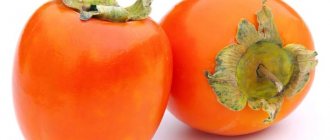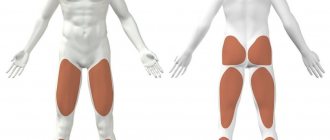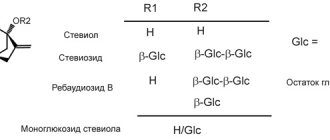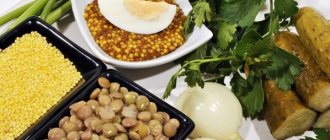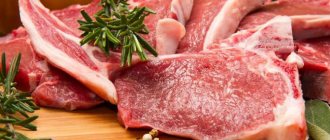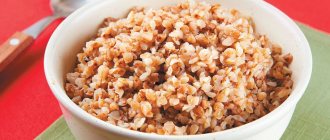In Japan, it is customary to give friends “kudzu-nuko” for the New Year - a symbolic gift in the form of a small jar of herring caviar. It is believed that a person’s wealth will depend on the number of eggs on a sandwich made with the participation of the donated delicacy.
Photo: Depositphotos.com. Author: asimojet.
But for a Russian person, herring caviar does not cause awe. Partly because we are used to beluga or chum salmon caviar. Plus, herring is too familiar, prosaic food for us. And for many housewives, its caviar is sent immediately after cutting the fish, if not to the cat in a bowl, then to the trash bin.
From the history
Indeed, for many centuries, herring was considered the food of the poor due to its bitter taste. And only in the 14th century, thanks to a simple Dutch fisherman Willem Jacob Bakels, this fish, salted in barrels immediately after catching, conquered first Europe and later Russia with its excellent taste.
Then it was the turn of the caviar. There were so many herring in the ocean waters that when the time came for spawning, the coastal strip was cloudy with milk, and all the algae were covered with a layer of caviar.
Unlike Europeans and Russians, Asian peoples fell in love with such caviar (in combination with kelp), preparing tons of it.
Composition and calorie content
The composition and calorie content of caviar depends on the habitat and production of fish. The fattest one was caught at the end of summer: it had time to put on fat.
Northern herring from subpolar latitudes and its caviar are valued on the market due to their high fat content (up to 33%) compared to Pacific herring (about 12%).
Calorie content and nutritional value of different types of caviar
| Type of caviar | Proteins, g | Fats, g | Carbohydrates, g | Calorie content, kcal |
| grainy beluga | 27,2 | 14,2 | 0 | 237 |
| Grainy pink salmon | 31,2 | 11,7 | 0 | 230 |
| Granular chum salmon | 31,6 | 13,8 | 0 | 251 |
| Grainy salmon | 32 | 15 | 0 | 245 |
| Grainy sevruga | 28,4 | 11,9 | 0 | 221 |
| Pressed sturgeon | 36 | 10,2 | 0 | 236 |
| Salted herring | 31,6 | 10,3 | 0 | 222 |
| Fresh herring | 16,3 | 10,7 | 0 | 161 |
As can be seen from the table, herring caviar has the lowest calorie content, which is why it should attract seafood lovers who are watching their figure and trying to keep their diet within dietary limits.
Nutritional table
| Compound | Quantity | Norm | Properties | Consequences of shortage |
| Proteins and fats: sources of energy, have a positive effect on skin condition. | ||||
| Squirrels | 31.6 g | 76 g | Stimulates the functioning of the nervous system, kidneys, and liver. Increases immunity, accelerates the speed of chemical reactions. | Growth and development in children slows down. Memory and the functioning of the endocrine glands, liver, kidneys, brain, cardiac and respiratory systems deteriorate. Immunity weakens. |
| Fats | 10.3 g | 60 g | Helps absorb vitamins and microelements. Positively affect the activity of brain cells. | Irritability, bad mood, constant feeling of hunger, fatigue, poor concentration. Joint pain, vision problems, skin problems. |
| Vitamins | ||||
| A | 90 mcg | 900 mcg | Strengthens the immune system, improves metabolism, slows down aging. | Hypovitaminosis, decreased resistance to viral infections |
| B1 | 0.24 mg | 1.5 mg | It is part of enzymes that provide the body with energy and affects the level of metabolism. | Dysfunction of the nervous, digestive, and cardiovascular systems. |
| B2 | 2.1 mg | 1.8 mg | Participates in redox reactions. | The condition of the skin and mucous membranes worsens, and light vision is impaired. |
| B4 | 13.7 mg | 500 mg | Lowers cholesterol in the blood, affects the condition of the nervous, blood, and digestive systems. | Insomnia, neuroses, fatigue, headaches, arrhythmia. |
| B5 | 0.2 mg | 5 mg | Participates in the metabolism of BZHU, forms antibodies. | Diseases of the small intestine, depression, fatigue, headaches. |
| B6 | 0.1 mg | 2 mg | Stabilizes nervous and muscle activity. Improves skin condition. | Irritability, loss of mood and strength, drowsiness or, conversely, insomnia. Formation of kidney stones, hair loss, dry skin. |
| B9 | 15.7 mcg | 400 mcg | Promotes the construction of new cells. | Poor memory, aggressiveness, irritability, early gray hair, hair loss. Infertility, decreased activity. |
| B12 | 0.2 mcg | 3 mcg | Stimulator of red blood cell formation and DNA structure. Renewal of the epidermis and gastric mucosa. | Fatigue, irritability, nervousness, pallor and yellowness of the skin, intestinal upset. |
| C | 0.6 mg | 90 mg | Antioxidant, accelerator of growth of new cells and tissues. | Weakening of cardiac activity, immunity, eye disease, scurvy, shortness of breath, increased fatigue. |
| D | 12.1 mcg | 10 mcg | Forms the skeleton, teeth and bone tissue, stabilizes blood glucose levels. | Dental diseases, rickets, insomnia, decreased activity, weight loss, blurred vision. |
| E | 7 mg | 15 mg | Antioxidant, participates in the functioning of the gonads, heart muscle, protects cell membranes from oxidative stress. | Neurological disorders. |
| H | 0.9 mcg | 50 mcg | Participates in the activity of the thyroid gland, normalizes blood sugar. | Mental disorders, growth retardation in children, anemia, muscle pain, weakness. |
| PP | 1.8 mg | 20 mg | Digestion of vegetable protein, improvement of the condition of the skin and mucous membranes. | Dizziness, headaches, constipation, sleep problems, decreased immunity. |
| Macronutrients | ||||
| Potassium | 197 mg | 2500 mg | Improves brain function and promotes oxygen saturation. | Weakness, swelling, decreased activity. Constipation, heart attacks, hair loss, intestinal upset, infertility. |
| Calcium | 19 mg | 1000 mg | Affects blood clotting, ensures the growth and strength of nails and hair. | General and muscle fatigue, sleep disturbances, deterioration in concentration, depression, arrhythmia, hypertension. |
| Silicon | 0.5 mg | 30 mg | Helps absorb vitamins, calcium, supports the immune system. | Increased risk of developing diabetes, oncology, cardiovascular diseases, hypertension. |
| Magnesium | 24.5 mg | 400 mg | Responsible for the development and growth of bones, normalization of blood sugar levels. | Metabolic failures, constant state of tension and anxiety, impaired insulin production. |
| Sodium | 61 mg | 1300 mg | Maintaining acid-base balance, activating enzymes of the pancreas and salivary glands. | Decreased appetite, memory loss, skin rashes. |
| Phosphorus | 808 mg | 800 mg | Regulates the acid-base balance and is necessary for the mineralization of bones and teeth. | Anorexia, anemia, rickets. |
| Chlorine | 194.7 mg | 2300 mg | Regulates water and acid-base balance. | Drowsiness, decreased activity. |
| Microelements | ||||
| Iron | 2.7 mg | 18 mg | Ensures the occurrence of redox reactions. | Anemia, increased fatigue, gastritis. |
| Iodine | 1 mcg | 150 mcg | Stabilizes hormonal levels. | Lethargy, drowsiness, apathy. Hypotension, excess weight, swelling, weakened immune system. |
| Cobalt | 2.4 mcg | 10 mcg | Activates fatty acid metabolism enzymes. | Increased fatigue, anemia, memory impairment. |
| Manganese | 0.145 mcg | 2 mcg | Promotes the absorption of vitamins B, C, E. Improves brain function. Promotes the formation of new cells. | Immunity disorders, osteoporosis, infertility. |
| Copper | 80.3 mcg | 1000 mcg | Increases immunity, normalizes the functioning of the digestive system. | Hair loss, pale unhealthy skin. Depression, irritability. |
| Molybdenum | 8.6 mcg | 70 mcg | Provides amino acid metabolism. | Skin sagging, hair loss, swelling. |
| Selenium | 40.3 mcg | 55 mcg | An element of the body's antioxidant defense. | Osteoarthrosis of the spine and limbs, myocardiopathy. |
| Fluorine | 170 mcg | 4000 mcg | Participates in the metabolism of minerals, strengthens bone structures and tooth enamel. | Caries, brittle nails and hair, osteoporosis. |
| Chromium | 194.7 mcg | 50 mcg | Regulates blood glucose levels. | Excessive weight, causeless fatigue, increased anxiety, male fertility, pre-diabetic conditions. |
| Zinc | 0.55 mg | 12 mg | Stimulates cell renewal, increases the body's defenses. | Memory loss, hair thinning, erosion, loss of appetite. |
| Fatty acid | ||||
| Omega-3 | 2.4 g | 0.9–3.7 g | Perform structural and energetic functions. | Brittle nails, hair loss, dandruff, thirst. |
| Omega-6 | 0.2 g | 4.7–16.8 g | Regulates the metabolism of proteins, lipids, sugars, and B vitamins. | Weakness, memory loss, increased weight. |
| Saturated | 1.5 g | up to 18.7 g | Source of energy, testosterone production. | Disruption of the hormonal and nervous systems. |
| -mono | 1.66 g | 18.8–48.8 g | Activate metabolic processes in the body. | Weakness, increased cholesterol in the blood. |
| -poly | 2.66 g | 11.2–20.6 g | Necessary for connective tissues. | Depression, hair loss, weakness, blurred vision. |
| Energy value | 222 kcal | |||
* Please note: all data is based on 100 g of product.
Calorie content and chemical composition
Such a simple fish as herring has long remained one of the most common fish delicacies to this day. Although not particularly presentable, this product still wins in the fight against competitors thanks to its impeccable and simple taste.
Check out the nutritional value of herring and its milk.
The composition of oceanic and freshwater herring is very similar, the only difference is the amount of iodine and fat: ocean herring has more of the first component, and river herring has more of the second. In terms of energy value, herring caviar is classified as a highly nutritious product, but it is located close to moderately high-calorie foods. Let's find out how many calories are in the caviar of this fish.
The chemical structure and nutritional value of the product are presented as follows:
| Components | Number of BZHU, energy units, list of vitamins and chemical elements |
| Squirrels | 31.6 g |
| Fats | 10.3 g |
| Carbohydrates | 0 g |
| Calories | 222 kcal |
| Vitamins |
|
| Chemical elements |
|
Important! The fish oil contained in the product reduces cholesterol levels in the blood, reducing the size of fat cells. Vitamins promote faster absorption of proteins and amino acids by the body, and mineral components have a good effect on ability to work, increase a person’s vigor and activity, improve his memory and concentration.
Beneficial features
An analysis of the nutrients in herring caviar shows how healthy it is:
- Stimulates vital processes: participates in hematopoiesis, tissue renewal, energy metabolism, supports the immune system, activates metabolism, triggers regeneration, removes waste and toxins, and prevents the development of cancer cells.
- Beneficial for the cardiovascular system: thins the blood and normalizes blood pressure, increases hemoglobin, reduces the risk of thrombophlebitis and varicose veins, cleanses the bloodstream of atherosclerotic plaques and lowers cholesterol levels in the blood.
- It heals the body due to lecithin, which supplies nutrients and vitamins to all cells and increases the effectiveness of medications.
- It has anti-inflammatory and restorative properties, which is especially important in the postoperative period.
- Normalizes the functioning of the thyroid gland due to the high content of fatty acids and vitamins.
- It has a beneficial effect on the nervous system: activates mental activity, improves mood, increases performance and endurance, relieves depression, the effects of stress, tension, drowsiness, and suspiciousness.
- Used in modern cosmetology (as part of masks and creams): smoothes wrinkles, increases skin elasticity, moisturizes and rejuvenates it, evens out complexion, fights pustules, saturates cells with collagen, elastin and fatty acids, and eases the course of psoriasis.
- Strengthens bones and joints: minimizes the risks of rheumatoid arthritis, increases bone strength.
Due to its relatively low calorie content, herring caviar is promising for dietary and therapeutic nutrition.
What are the benefits of herring caviar?
Herring caviar is a completely standard snack, distinguished not only by its bright and interesting taste, but also by its unique beneficial effect on the human body. The combination of vitamins and components contained in this product strengthens the overall protective functions of the body, especially in the autumn-winter period.
It is recommended to include herring caviar in the menu for people with active development of thyroid diseases or during the rehabilitation period after completing a course of treatment for these diseases.
Consumption of the product activates a number of actions that are particularly significant for the body: tissue renovation, an increase in the level of hemoglobin, the formation of new red blood cells, the transformation of high or low blood pressure into normal.
Find out the benefits of caviar from different types of fish: capelin, cod, pike, pollock, halibut.
The most important element that gives such a healing result is a fat-like substance - lecithin, which is abundant in herring caviar.
Despite the high calorie content of salted herring caviar, its consumption in moderation is allowed even in dietary nutrition. The amount of fat contained in herring ranges between 2 and 33%: this figure depends on the time of year, as well as the area of the ocean in which the fish was caught. As practice shows, the mass of fat in herring caught in latitudes closer to the pole (subpolar) is higher than in others.
This is interesting: Morels: useful properties, what they look like, where they grow and when to collect
Important! Diseases of the cardiovascular system, as well as edema associated with certain disturbances in the process of its functionality, ulcers, simultaneous inflammation of the large and small intestines do not require a complete rejection of this product, but require limiting the amount consumed.
Vitamin A, or retinol, plays an important role in supplying human eyes with beneficial components, as it promotes the formation of carotene. Vitamin D has a beneficial effect on the immune system, allowing the body to accumulate additional energy.
The fatty component of herring caviar contains healthy cholesterol in the amount of 1.5 to 14%, and the level of lecithin ranges from 1.0 to 43%.
Herring caviar has a very effective effect on the epidermis, preventing the process of withering and aging of the skin; in addition, the product heals wounds and affected areas well.
Salt in fish prevents the proliferation of numerous types of bacteria, and also delays the activity of various toxins. The effect of polyunsaturated fatty acids on the body can be characterized as follows:
- increase the efficiency of recovery processes in the body, thereby preventing the formation of “bad” cholesterol;
- break up existing atherosclerotic plaques in blood vessels;
- reduce the risk of blood clots;
- improve blood circulation;
- help overcome seasonal depression;
- inhibit the expansion of cancerous tumors in the body;
- rid the body of waste and toxins;
- reduce inflammatory processes.
In people with psoriasis, consuming herring caviar helps alleviate the symptoms of the disease, and the antioxidants contained in this product reduce the number of oxidative process products in the plasma fluid.
Did you know? In Japan, not so long ago, herring caviar began to be used as the basis of a face mask. These cosmetic products rejuvenate and tighten the skin, and also smooth out wrinkles on the face.
The collective effect of magnesium and unsaturated fatty acids reduces the likelihood of rheumatoid arthritis and asthma attacks. In addition, the combined effect of nicotinic acid and calciferol has a positive effect on the functionality of the human skeleton.
Harm and contraindications
Like any product, there are contraindications.
First of all, we need to talk about salted caviar, because it contains a lot of salt. Excessive consumption threatens fluid retention in the body, increasing the risk of serious diseases (diabetes mellitus, gastritis, urolithiasis), disturbances in the functioning of the stomach, kidneys and organs of the hepatobiliary system.
Attention! Raw or poorly salted caviar may contain eggs of parasitic worms, which are extremely dangerous to human health.
Nutritional value and calorie content
The nutritional value and calorie content of herring vary depending on the method of preparation of the product and its variety. Fresh fish contains 125.3 kcal per 100 g. Herring caviar contains 221.2 kcal per 100 g, and milt - 143.2 kcal.
Let's consider the nutritional value of herring (different types of cooking) per 100 grams in table form:
| Variety of herring | Calorie content, kcal | Proteins, g | Fats, g | Carbohydrates, g |
| Salty | 145,9 | 18,1 | 8,5 | 0 |
| Fried | 180,5 | 21,3 | 17,6 | 0 |
| Smoked | 226,9 | 23,7 | 11,4 | 0 |
| Lightly salted or lightly salted | 189,6 | 17,9 | 11,5 | 0 |
| Boiled | 131,1 | 21,2 | 10,9 | 0 |
| Baked in the oven | 200,5 | 18,6 | 12,9 | 1,1 |
| Pickled | 159,6 | 16,8 | 12,7 | 3,3 |
| Canned in oil | 305,8 | 16,4 | 26,9 | 0 |
A fillet of salted herring contains 144.8 kcal, and one piece of fish contains approximately 41.2 kcal. In addition, herring contains ash in the amount of 11.4 per 100 g of the edible part of the fish.
The ratio of BJU in milt is 22.2/1.4/6.4, respectively, and in herring caviar – 31.7/10.21/0.
The product cannot be called high-calorie, so it can be consumed in moderation even while losing weight, unless you should avoid fish in oil or smoked.
Is it possible for pregnant and lactating women
Due to its high nutritional value, in particular the content of unsaturated fatty acids, doctors recommend herring caviar to pregnant women.
The fact is that without omega-3, the child’s internal organs cannot form and develop (the optimal amount is 4 mg per day). It is these fatty acids that improve blood supply to the placenta, which further facilitates the birth process for both the mother and her baby.
But nursing women should not eat salted caviar, because breast milk acquires an unpleasant taste and can cause disgust in the baby. The ban does not apply to boiled, baked or steamed products.
Opisthorchiasis
This parasitic disease is caused by a cat fluke from the class of flukes. A person becomes infected with worms by eating poorly thermally processed, raw, lightly salted or lightly dried herring. The carrier of opisthorchiasis, be it a person or a cat, is the source of infection. Signs of an allergic disease appear 2–4 weeks after invasion.
Symptoms of opisthorchiasis:
- itchy skin rashes;
- temperature increase;
- asthmatic bronchitis;
- arthralgia and myalgia.
Symptoms of damage to internal organs appear as the larvae mature into adults. The favorite place of the cat fluke is the liver and bile ducts.
Opisthorchiasis is a disease from the group of trematodes caused by parasitic flatworms of the genus Opisthorchis
Clinical manifestations of this stage:
- pain in the right hypochondrium after eating due to blockage of the bile ducts;
- girdle pain in the abdomen radiating to the left half of the chest - a sign of pancreatitis;
- nausea and vomiting;
- lack of appetite;
- yellowing of the sclera and skin;
- alternating constipation with diarrhea.
Over time, the absorption of fat-soluble and other vitamins is impaired. The progression of the disease is complicated by liver failure and dysfunction of the gastrointestinal tract.
Varieties
- Punched caviar (typical of European cuisine) is obtained by freeing the eggs from the film, rubbing them through a screen (special sieve) and salting according to a certain recipe (with the addition of marinade, oil, spices). Used for toppings, sandwiches, snacks.
- Kazunoko-komba (Japanese cuisine). The method of preparation is interesting: the Japanese collect fertilized eggs along with the algae on which spawning took place, season them with spices and salt them. The result is long, thick strips of still fresh, crispy caviar - the most respected and, according to the people of Japan, delicious delicacy. The cost reaches $80 per 1 kg.
- Dry, strongly salted caviar. Used to make sushi.
How not to make a mistake in choosing
Photo: Sigaeva O.
Herring caviar can be purchased from a barrel (it is easy to evaluate the color, taste, smell) or in a jar.
How to choose the right product in a closed container?
- There are no dents or signs of swelling on the can.
- Find the production date and shelf life (all numbers are extruded from the inside). Caviar is canned immediately after extraction, no later than October; December caviar is frozen, less tasty, and contains a lot of water.
- The product does not contain additives: glycerin E400, methenamine E239, etc.
- Shake the jar. It’s great if the caviar moves in it.
- After opening, pay attention to the cleanliness of the inner surface of the lid - a quality product never sticks to the walls.
- The quantity is at least 65% of the container volume.
Carefully! If stored for a long time, toxic tyramine can accumulate in the tin. There are two reasons for this: initially stale raw materials and the wrong amount of salt chosen by the manufacturer.
It turns out that caviar is safer to cook at home. But for this you should choose high-quality herring with caviar:
- Signs of freshness: high elasticity (there are no dents left when fingers press on the carcass); eyes are light, without film; the skin is shiny, without mucus and yellow spots.
- The fish should be chilled, not frozen.
- The smell is specific, characteristic of raw herring, but not repulsive.
- The length is at least 25 cm, the mouth is rounded (characteristic of females), and not narrow and elongated (as in males).
How to salt caviar with your own hands
Salted or lightly salted caviar is good both as an appetizer and as an addition to savory salads. We bring to your attention the most simple pickling recipe.
- Gut the fresh herring, remove the caviar, free it from the films. Please note: the eggs are easily separated from each other (this is a feature of herring).
- For 300 g of caviar you will need 300 mg of water, 1 tbsp. l. salt, 1 tbsp. l. sunflower oil, 1–2 bay leaves.
- Mix water and salt in a container, add oil and bay leaf, add caviar and gently stir or shake.
- Place in a cool place for 12–15 hours.
For sandwiches. Free the salted caviar from the remaining films, mash with a fork, and add to the softened butter. Place finely chopped dill there, add salt and pepper to taste. Place in the refrigerator, covered. After cooling, the product is ready for use.
The benefits and harms of butter.
Crispy herring roe
The processing described in this recipe produces caviar that is strong in consistency and very crispy. This is a real finger-licking delicacy that can be prepared quickly and in large quantities.
Ingredients:
- caviar – 1 kg;
- salt – 3 tbsp. l.;
- sugar – 3 tsp;
- pepper (mixture) – 1 tsp;
- bay leaf – 10-13 pcs.
Rinse and dry the caviar, being careful not to damage the film bags. Place a bay leaf (2-3 pieces) on the bottom of the container, place a layer of caviar on it so that it covers the entire bottom. Season the workpiece by pouring a pinch of salt, sugar and pepper on it. Add a bay leaf and repeat the procedure. Continue filling containers (or several containers) until the main ingredient is gone. Close the jars tightly and take them to the cellar (put them in the refrigerator) for 2-3 days.
Storage Secrets
Herring caviar in a sealed jar can be stored according to the terms indicated on the packaging (the exact terms depend on the manufacturer).
Important! After opening, be sure to transfer the caviar from the tin into a glass jar. If this is not done, the inner walls of the metal container will begin to oxidize, causing rapid spoilage of the product.
Once opened, consume the caviar within 3 days. Store only in the refrigerator at a temperature not lower than –6 °C.
Caviar oil remains fresh for 1–2 days longer if it is kept under a tightly sealed lid all this time.
Lifehack. Dry-salted caviar may dry out during storage. Adding a small amount of vegetable oil will help to revive it.
A jar of herring caviar on the counter is a familiar sight. And how often do we pass by without even thinking that there is a storehouse of useful substances on the shelf for little money? Maybe we should take it today?
How to cook herring caviar and what it goes with
Healthy fish eggs can be consumed as an independent product without harm to health. They also go well with a potato side dish, rice, vegetables and are great for making sandwiches.
You can pickle caviar in this way:
- Release the product from the container.
- Pour 300 mg of water into the vessel and add 1 tbsp. l. salt.
- Add 1 tbsp. l. vegetable oil and a couple of bay leaves.
- Add caviar and mix gently.
- Place in a cool place for a day.
We recommend reading: Benefits of bell pepper, properties
To make a paste for sandwiches, you need to mash the salted caviar with a fork, mix with softened butter, dill, salt and pepper. Place the mixture in a jar and cover with a lid. Place in the refrigerator. Can be eaten immediately after cooling.
We recommend reading: Chili peppers: benefits and harms, properties, how to eat them

